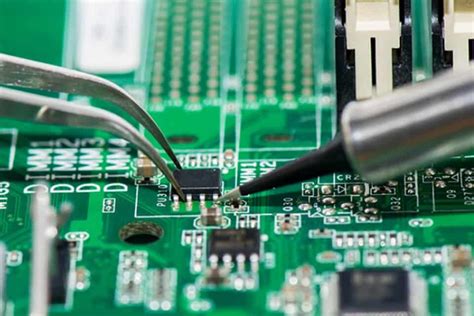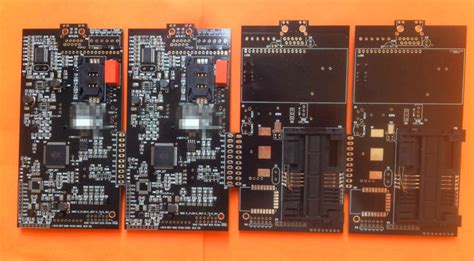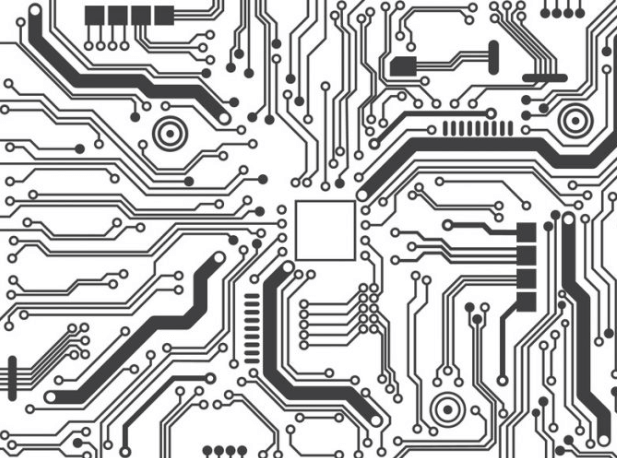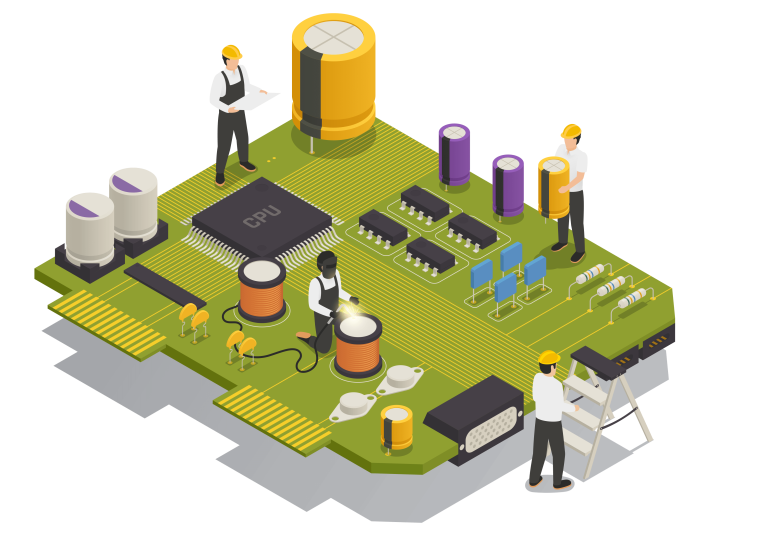Sharing some misunderstandings about high-speed signals and high-speed PCB design
Sharing some misunderstandings about high-speed signals and high-speed PCB design
This article mainly analyzes some misunderstandings about high-speed signals and high-speed PCB design in PCB” target=”_blank”>high-speed PCB design.
Misunderstanding 1: Only signals above GHz rate are considered high-speed signals?
When it comes to “high-speed signals”, we need to first clarify what “high speed” means. Is the signal at MHz rate considered high-speed, or is the signal at GHz rate considered high-speed?
The traditional SI theory has a classic definition of “high-speed signal”.
SI: Signal Integrity , that is, signal integrity.
SI theory understands the signal transmission behavior of PCB interconnection lines. The signal edge rate almost completely determines the maximum frequency component in the signal. Usually, when the signal edge time is less than 4 to 6 times the interconnection transmission delay, the signal interconnection path will be treated as a distributed parameter model, and SI behavior needs to be considered.
The so-called “high speed” means “the signal edge time is less than 4 to 6 times the interconnection transmission delay”. It can be seen that whether the signal transmitted by the circuit board is “high speed” depends not only on the edge rate of the signal, but also on the path length of the circuit board line. When there is a certain proportional relationship between the two, the signal should be processed as a “high-speed signal”.

Error Area 2: Can high-speed PCB design be done well with a simulation software platform?
EDA design software platform integrates high-speed signal simulation function, which is of great help for the formulation and execution of high-speed PCB design rules, signal quality simulation and evaluation.
However, in the actual PCB design process, sometimes the simulation results show that the signal quality is good, but the signal quality is very poor during the actual test, and does not meet the signal test standard.
In fact, simulation and testing are inseparable. Take the IBIS model as an example. We usually call it a “behavioral model”. This type of simulation model is also established through the V and I test curves of the chip under different working conditions. This poses a problem. If the simulation is not closed, Note that the chip model under which working conditions is selected will be inaccurate in simulation, for example: Slow, Typical, Fast.
From the above examples, it can be seen that the “simulation model library” is crucial to the simulation results. The simulation model must be compared and corrected through the simulation test of the actual product project to be considered as an “accurate simulation model”.
Having a good simulation design platform cannot solve all problems. “Accurate simulation model” is also required. In addition, the application scenario of the actual product project must be considered. A certain signal network simulated will be affected by power supply noise, other signal crosstalk and other factors, which will also cause differences between test results and simulation results.

Misunderstanding 3: The simulation software Is the “transmission line model” of PCB routing very accurate?
The PCB routing in the simulation software, whether it is a microstrip line or a stripline, can be modeled through the simulation tool. This model is based on the stacking and the size of the actual routing. Generally, it can meet the accuracy requirements. However, if it is said to be “very accurate”, there is still some gap, which needs to be analyzed from the following aspects:
(1) The roughening/browning treatment process of PCB copper foil affects the signal quality
During the PCB processing, in order to improve the bonding strength between the PCB copper foil layer and the dielectric layer and reduce the risk of PCB delamination, there will be a roughening/browning treatment process, which is to make the copper foil surface rough by grinding or corrosion.
In the transmission of high-speed signals in conductors, there is a “skin effect”, which means that when high-frequency signals are transmitted, the current flowing in the conductor will migrate to the periphery or the “skin” of the conductor.
The rough surface of the PCB copper foil affects the loss on the one hand and the signal transmission delay on the other hand. This is easy to understand, just like a car will take longer to drive on a rugged mountain road than on an asphalt road.
(2) The dielectric constant Dk and tangent loss angle Df of PCB medium change with frequency
The Dk and Df of PCB medium in the simulation tool are usually constants, but from the perspective of actual signal transmission, Dk/Df changes with frequency.
Dk/Df will change with the transmission signal rate. If these two parameters are treated as constants in the simulation tool, it will affect the simulation accuracy of the transmission line model. The higher the signal transmission rate, the greater the impact.
(3) The “anisotropy” effect of PCB board
PCB board is usually a woven structure of “epoxy resin + glass cloth”. The arrangement direction of glass cloth is divided into “warp” and “weft”. At the same time, according to the thickness and spacing of glass fiber, it is divided into different types of PCB board, such as: 1080, 2116, etc. When PCB board uses different types of glass cloth, the proportion of glass cloth and resin in the board is different.
The Dk/Df values of glass cloth and resin materials are quite different. When the relative position of the normal PCB routing and the glass cloth is different, the Dk/Df value of the reference medium will be different, and the impedance and loss of the signal will also be different, as shown in the figure below. This is why some projects require the entire PCB routing direction to be 10°.
Misunderstanding 4: One simulation software platform can solve all signal simulation problems
There is currently no unified simulation software platform that can be applied to all signal simulation scenarios. Cadence SPB SigXplorer is used for behavioral signal quality simulation, Synopsys HSPIe is used for transistor-level simulation, Ansoft HFSS is used for 3D electromagnetic field modeling, and Ansoft ADS is used for time-domain and frequency-domain hybrid simulation. There is currently no software that can unify the world.
Shielding methods in high-speed PCB design The transmission rate of the high-speed PCB design wiring system is also accelerating with the changing times, but this also brings a new challenge to it-the anti-interference ability is getting weaker and weaker. All of this stems from the fact that the higher the frequency of transmitted information, the more sensitive the signal, and the weaker the energy, so the wiring system is becoming more and more susceptible to interference. In some common electronic devices, such as computer screens, mobile phones, motors, radio broadcasting equipment, etc., cables and equipment can interfere with other components or be seriously interfered by other interference sources. Next, Shenzhen PCBA Factory will introduce shielding methods in high-frequency PCB design.
Sharing some misunderstandings about high-speed signals and high-speed PCB design
Shielding methods in high-frequency PCB design
Especially when using high-speed data networks, the time required to intercept a large amount of information is significantly lower than the time required to intercept low-speed data transmission. The twisted pair in the data twisted pair can resist external interference and pair crosstalk by its own twisting at low frequencies, but at high frequencies (especially when the frequency exceeds 250MHz), only twisting cannot achieve the purpose of anti-interference, and only shielding can resist external interference.
The role of the cable shield is similar to that of the Faraday shield. I
nterference signals enter the shielding layer, but not the conductor. Therefore, data transmission can run without trouble. Since shielded cables have lower radiated emissions than unshielded cables, network transmission is blocked. Shielded networks (shielded cables and components) can significantly reduce the radiation level of electromagnetic energy that may be intercepted when entering the surrounding environment.
The shielding options for different interference fields mainly include electromagnetic interference and radio frequency interference. Electromagnetic interference (EMI) is mainly low-frequency interference. Motors, fluorescent lamps and power lines are common sources of electromagnetic interference. Radio frequency interference (RFI) refers to radio frequency interference, which is mainly high-frequency interference. Wireless communications such as radio, TV broadcasting, radar, etc. are common sources of radio frequency interference. For anti-electromagnetic interference, braided shielding is the most effective because it has a lower critical resistance; for radio frequency interference, foil shielding is the most effective. Since braided shielding relies on the change of wavelength, the gap it creates allows high-frequency signals to freely enter and exit the conductor; for high- and low-frequency mixed interference fields, a combined shielding method of foil layer and braided mesh with broadband coverage function should be adopted. Generally speaking, the higher the mesh shielding coverage, the better the shielding effect.







